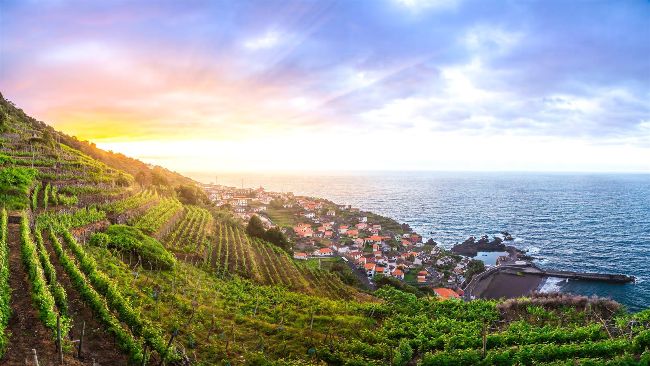Thematic dossier

Rural areas:
an eye to the future
Dubravka Suica is coordinating the work of the European Commission in preparing a long-term vision for rural areas, that will be presented in the coming weeks. In her interview to TerritoriALL she explains how the EU can make use of all available resources to ensure the challenges and concerns of rural areas will be addressed.

Dubravka Suica
ESPON: Election results in the United States and Europe created an impression that populism finds fertile ground in rural areas. Do you share this view? Are rural areas the 'places left behind' by EU policies? What is the European promise for people living in rural areas?
Dubravka Suica: Populism usually finds fertile ground in discontent, and our recent report on The Demographic Landscape of EU Territories demonstrates how much political attitudes and electoral behaviours may be shaped and influenced by age and place of residence. Democracy is not static. It constantly evolves.
I regularly say that ourdemocracy must be "Fit for the Future" to strengthen our representative democracy and to meet the various challenges ahead of us. This is what the Conference on the Future of Europe is all about - putting citizens at the heart of policymaking. This includes the 137 million EU citizens living in rural areas. Almost 40 % of those who replied to the public consultation organised in preparation of our upcoming long-term vision for rural areas said that they felt left behind by society and policymakers.
This perception and the factors that drive it need to be tackled. My promise t o people living in rural areas is that we will address their challenges and concerns,by building on the emerging opportunities of the EU's green and digital transitions and the lessons learned from the COVID-19 pandemic, and by identifying means to improve rural quality of life, achieve balanced territorial development and stimulate economic growth in rural areas.
ESPON:
Between the goals set by the Common Agriculture Policy and Cohesion olicy, why do we need a Long Term Vision for Rural Areas?
D.S.: Our ambition with the long-term vision is to bridge gaps and build synergies between all European policies for the very benefit of rural areas. It goes way beyond any particular policy or fund. It is not only about helping rural areas or providing funding, but more about the way we look at rural areas and, perhaps more importantly, the way they look at themselves. And that is the value added of the long-term vision.
To create new momentum for rural areas, using the flexible and adaptable framework that the cohesion policy provides us with to address, for example, demographic challenges in a targeted and coordinated manner, but also the common agricultural policy, with its rural development dimension, or Horizon Europe, with research and innovation. The point is to make best use of all the resources available to support the social and economic development of rural areas and make them vibrant, dynamic and attractive. I am confident that this vision, which is supported by an action plan, will equip us with the tools to encourage these regions to become confident, innovative and competitive and to improve the quality of life of their citizens.
ESPON:
Our latest research shows that shrinking rural regions face complex and diverse development challenges besides depopulation. The same research shows that 40 % of rural areas are growing and sometimes are really attractive. How is the long-term vision going to take these very different territorial contexts into account? What will be the specific messages for each of them?
D.S.: Europe's rural areas are very diverse. Variations in natural and climatic conditions, geographical features, historic and cultural developments, demographic and social changes, national and regional specificities, and economic prosperity mean that no two rural areas are alike. From the demographic point of view, some regions will face sharp population decline, while others will experience steady population growth. To identify and anticipate the various demographic trends in EU territories, we produced a report on the impact of demographic change in Europe in June 2020, and more recently launched our Atlas of Demography. This diversity calls for locally designed responses and solutions that correspond to each territory's specific needs and possibilities. It also means that territorial development strategies should address rural areas according to their individual characteristics and in relation to their environment. Changes to society, including the latest changes caused by COVID-19, should be turned into opportunities for rural areas. We need to avoid an asymmetric recovery and ensure that all of the EU's territories have the means to bounce back equally from the pandemic. This is what we will try to do with our long-term vision: create a better future not for the rural areas, but with them, while of course ensuring that these areas maintain the essential character that makes them so special.
"Our ambition with the long-term vision is to bridge gaps and build synergies between all European policies for the very benefit of rural area"
ESPON: According to the public consultation's findings, people identify lack of infrastructure as the main problem of rural areas. Still, at the same time, they say they prefer to live there because of the 'quality of life'. Do you think that these two statements contradict each other?
D.S.:
Not at all. The EU's rural areas are a core part of the European way of life. They are widely recognised and valued for food production, management of natural resources, protection of natural landscapes, and recreation and tourism. And this is the very reason why many Europeans are worried about the erosion of rural infrastructure and service provision, including access to healthcare, social services and education, or about shrinking employment opportunities or limited transport and digital connectivity. Our objective is to address these challenges and concerns and to pave the way, with the actions we will propose, to fostering territorial cohesion and creating new opportunities that will attract innovative businesses, provide access to high-quality jobs, promote new and improved skills, ensure better infrastructure and services, and leverage the role of sustainable agriculture and diversified economic activities.
DubravkaSuica is Vice-President of the European Commission for Democracy and Demography